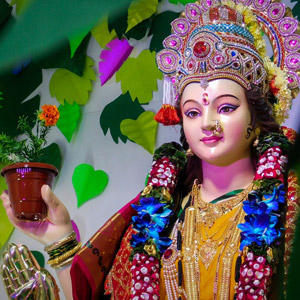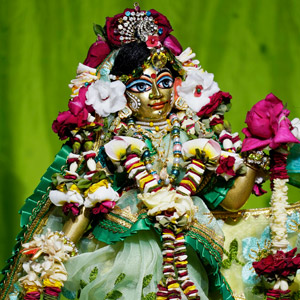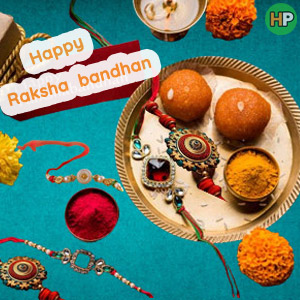Maha kumbh Mela Festival 2025: Date, Auspicious Timing and Way to celebrate of Kumbh Festival ?
महाकुंभ मेला 2025 : तिथि, पूजा का शुभ मुहूर्त, त्योहार मनाने के तरीके..)

The Kumbh Mela is a massive Hindu pilgrimage and festival that takes place every 12 years at four specific locations in India: Prayagraj, Haridwar, Ujjain, and Nashik. Pilgrims gather at the banks of sacred rivers to bathe and purify themselves, believing that taking a dip in these holy waters will cleanse them of their sins and help them attain spiritual merit.
कुंभ मेला एक विशाल हिंदू तीर्थयात्रा और त्योहार है जो हर 12 साल में भारत के चार विशिष्ट स्थानों पर होता है: प्रयागराज, हरिद्वार, उज्जैन और नासिक। तीर्थयात्री स्नान करने और खुद को शुद्ध करने के लिए पवित्र नदियों के तट पर इकट्ठा होते हैं, उनका मानना है कि इन पवित्र जल में डुबकी लगाने से उनके पाप धुल जाएंगे और उन्हें आध्यात्मिक योग्यता प्राप्त करने में मदद मिलेगी।
Maha Kumbh 2025 Date and place ( महाकुंभ मेला की तारीख और जगह )
In 2025, Prayagraj, Uttar Pradesh becomes the epicenter of devotion, as the divine Maha Kumbh unfolds — 12 Kumbh Melas converge into this historic spiritual odyssey!
2025 में, उत्तर प्रदेश का प्रयागराज भक्ति का केंद्र बन जाता है, क्योंकि दिव्य महाकुंभ शुरू होता है – 12 कुंभ मेले इस ऐतिहासिक आध्यात्मिक यात्रा में परिवर्तित होते हैं!
Mon, 13 January 2025 – Wed, 26 Febuary 2025
सोमवार, 13 जनवरी 2025 – बुधवार, 26 फरवरी 2025
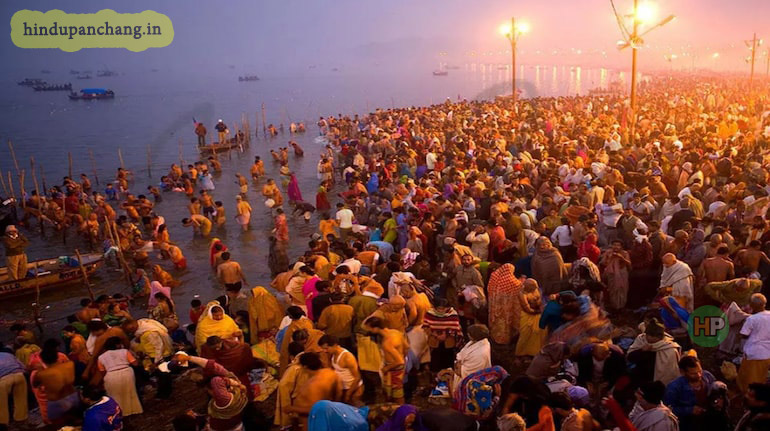
Special Shahi Snan Dates ( विशेष शाही स्नान तिथियाँ ) :-
- First Shahi Snan : 14 January 2025 Day of Makar Sankranti
पहला शाही स्नान: 14 जनवरी 2025 मकर संक्रांति का दिन। - Second Shahi Snan : 29 January 2025 Day of Mauni Amavasya
दूसरा शाही स्नान: 29 जनवरी 2025 मौनी अमावस्या का दिन। - Third Shahi Snan : 03 February 2025 Day of Basant Panchami
तीसरा शाही स्नान: 03 फरवरी 2025 बसंत पंचमी का दिन। - Another special Snan date: 12 February 2025 Day of Maghi Purnima
अन्य विशेष स्नान तिथि: 12 फरवरी 2025 माघी पूर्णिमा का दिन।
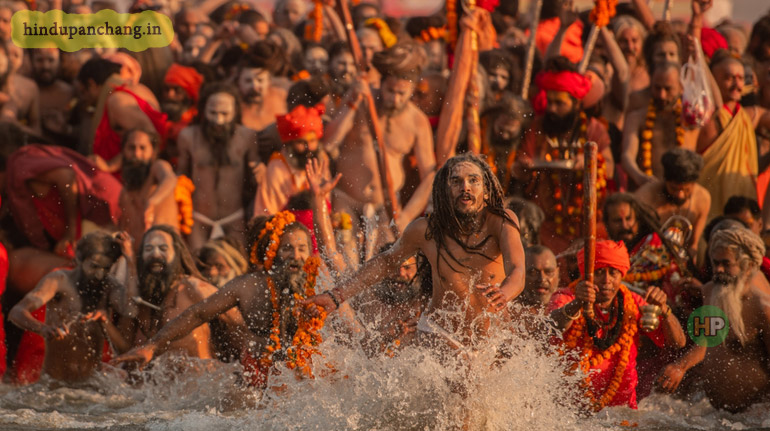
Some Pictures of Maha Kumbh Mela 2025 … ( Prayagraj, UP )
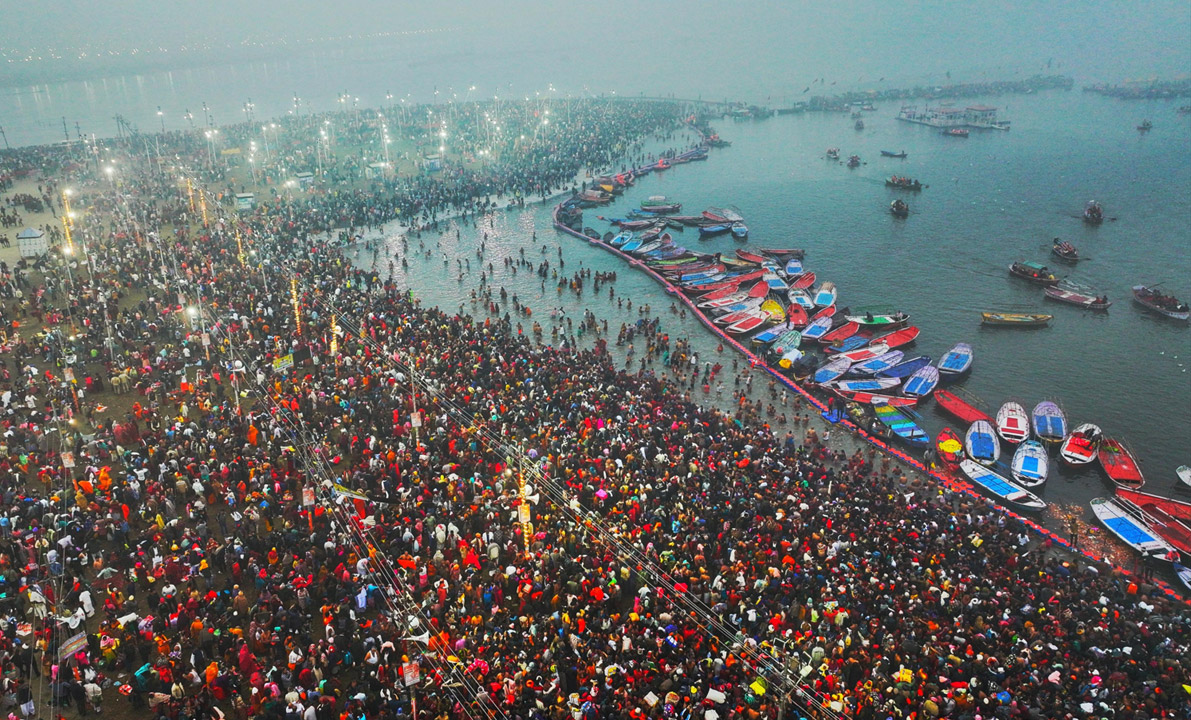
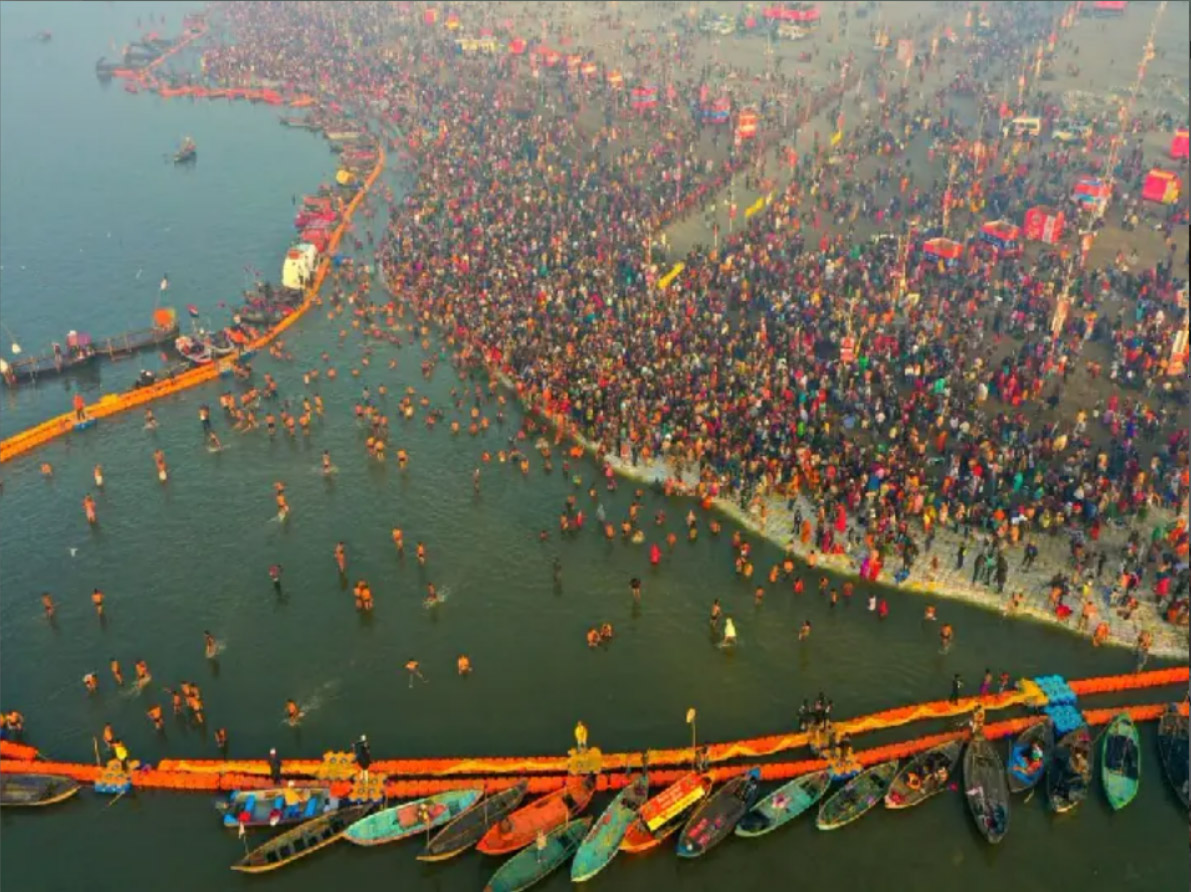
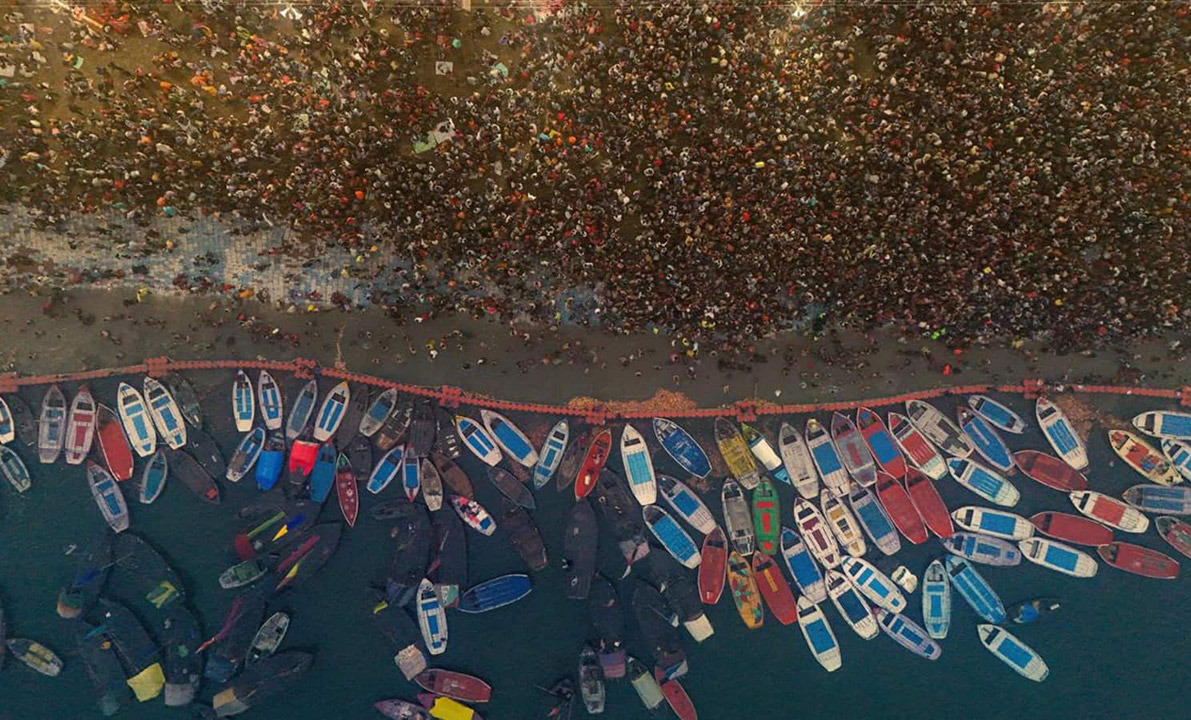
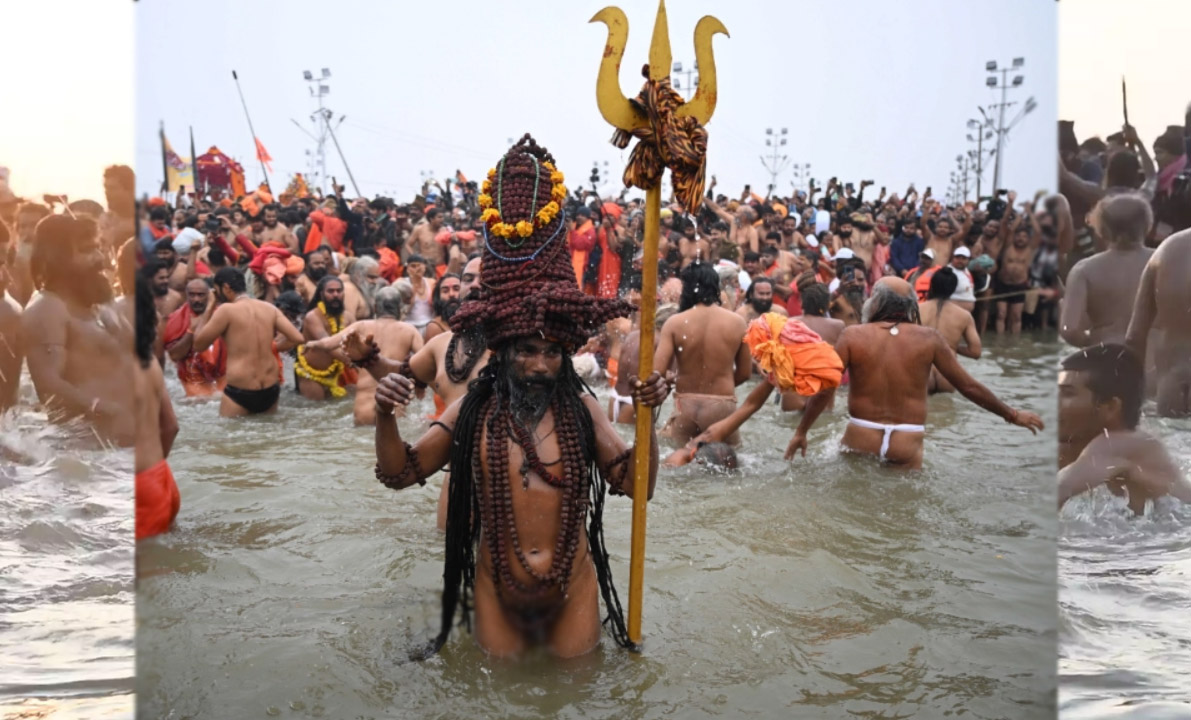
The Maha Kumbh Mela
- The Maha Kumbh Mela is the most special and auspicious Kumbh Mela, which occurs every 144 years (four cycles of 12 years). The Maha Kumbh Mela is celebrated at the Prayagraj confluence of the Ganges, Yamuna, and the mythical Sarasvati river, and is said to be the largest human gathering in the world.
महाकुंभ मेला सबसे खास और शुभ कुंभ मेला है, जो हर 144 साल (12 साल के चार चक्र) में आता है। महाकुंभ मेला गंगा, यमुना और पौराणिक सरस्वती नदी के प्रयागराज संगम पर मनाया जाता है, और इसे दुनिया में सबसे बड़ा मानव जमावड़ा कहा जाता है।
History of Maha Kumbh ( महाकुंभ का इतिहास ) :-
The Kumbh Mela is deeply rooted in Hindu mythology and has its origins in the “Samudra Manthan” (churning of the ocean) story from ancient scriptures. Here’s the mythological backstory:
कुंभ मेला हिंदू पौराणिक कथाओं में गहराई से निहित है और इसकी उत्पत्ति प्राचीन ग्रंथों की “समुद्र मंथन” (समुद्र मंथन) कहानी से हुई है। यहाँ पौराणिक कथा है :
- The Churning of the Ocean (Samudra Manthan): According to Hindu mythology, the gods (Devas) and demons (Asuras) once churning the ocean to obtain the nectar of immortality (Amrita).
समुद्र मंथन : हिंदू पौराणिक कथाओं के अनुसार, देवताओं (देवों) और राक्षसों (असुरों) ने एक बार अमरता का अमृत प्राप्त करने के लिए समुद्र मंथन किया था। - During the churning process, a Kumbh (a pot or urn) containing the nectar emerged from the ocean.
मंथन प्रक्रिया के दौरान, समुद्र से अमृत से भरा एक कुंभ (एक बर्तन या कलश) निकला। - A fierce battle broke out between the gods and demons over possession of the nectar. During the fight, drops of the Amrita fell at four locations: Prayagraj, Haridwar, Ujjain, and Nashik. These spots became the sites where the Kumbh Mela is celebrated.
अमृत पर कब्ज़ा करने के लिए देवताओं और राक्षसों के बीच भयंकर युद्ध छिड़ गया। लड़ाई के दौरान अमृत की बूंदें चार स्थानों पर गिरीं: प्रयागराज, हरिद्वार, उज्जैन और नासिक। ये स्थान वे स्थान बन गए जहां कुंभ मेला मनाया जाता है। - The Kumbh Mela is believed to mark the place where these divine drops fell, and taking a dip in the river at these places is thought to wash away sins and bring liberation.
ऐसा माना जाता है कि कुंभ मेला उस स्थान को चिह्नित करता है जहां ये दिव्य बूंदें गिरी थीं, और माना जाता है कि इन स्थानों पर नदी में डुबकी लगाने से पाप धुल जाते हैं और मुक्ति मिलती है।
- The Divine Purpose:The festival celebrates the cosmic battle between good and evil and symbolizes the victory of good over evil, purity over impurity, and the renewal of faith in the divine.
दिव्य उद्देश्य : यह त्योहार अच्छाई और बुराई के बीच लौकिक युद्ध का जश्न मनाता है और बुराई पर अच्छाई की जीत, अशुद्धता पर पवित्रता और परमात्मा में विश्वास के नवीनीकरण का प्रतीक है।
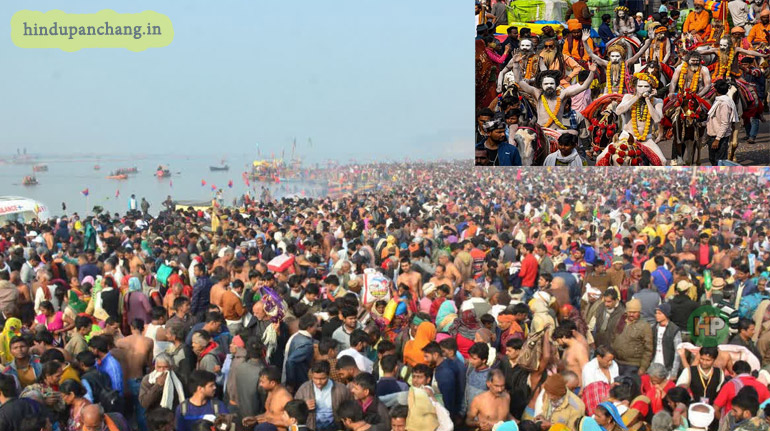
Key Features of Maha Kumbh ( महाकुंभ की मुख्य विशेषताएं ) :-
The Maha Kumbh Mela is the most sacred and rare event. The most recent Kumbh Mela took place in 2013, and the next Kumbh is 2027 and Maha Kumbh will be in 2100 .
महाकुंभ मेला सबसे पवित्र और दुर्लभ आयोजन है। सबसे हालिया कुंभ मेला 2013 में हुआ था, और अगला कुंभ मेला 2027 और महाकुंभ 2100 में होगा।
- The Holy Dip: Pilgrims take a ceremonial bath (snan) at the sacred confluence ( Triveni Sangam ) of the Ganges, Yamuna, and Sarasvati rivers. It is believed that this bath will cleanse them of their sins and purify their souls.
पवित्र डुबकी : तीर्थयात्री गंगा, यमुना और सरस्वती नदियों के पवित्र संगम ( त्रिवेणी संगम ) पर औपचारिक स्नान करते हैं। ऐसा माना जाता है कि यह स्नान उनके पापों को धो देगा और उनकी आत्मा को शुद्ध कर देगा। - Astrological Significance : The timing of the Kumbh Mela is determined based on specific astrological alignments of the sun, moon, and Jupiter. The best time for the bath is when these celestial bodies align in a way that enhances spiritual benefits.
Special bathing dates are considered the most auspicious, and millions of devotees wait for these days to take the holy dip.
ज्योतिषीय महत्व : कुंभ मेले का समय सूर्य, चंद्रमा और बृहस्पति की विशिष्ट ज्योतिषीय स्थिति के आधार पर निर्धारित किया जाता है। स्नान के लिए सबसे अच्छा समय वह है जब ये खगोलीय पिंड इस तरह से संरेखित होते हैं कि आध्यात्मिक लाभ बढ़ जाता है।
विशेष स्नान तिथियों को सबसे शुभ माना जाता है और लाखों भक्त पवित्र स्नान करने के लिए इन दिनों की प्रतीक्षा करते हैं। - Processions and Rituals : The Mela is famous for the processions of Naga Sadhus (holy men) who march to the river to bathe first, symbolizing their renunciation of worldly life.
Various temples and religious groups set up camps and conduct spiritual discourses, prayers, and devotional activities during the Mela.
जुलूस और अनुष्ठान : यह मेला नागा साधुओं (पवित्र पुरुषों) के जुलूस के लिए प्रसिद्ध है जो पहले स्नान करने के लिए नदी की ओर बढ़ते हैं, जो उनके सांसारिक जीवन के त्याग का प्रतीक है।
मेले के दौरान विभिन्न मंदिर और धार्मिक समूह शिविर स्थापित करते हैं और आध्यात्मिक प्रवचन, प्रार्थना और भक्ति गतिविधियाँ आयोजित करते हैं। - Devotional Activities : Throughout the Mela, there are countless rituals, prayers, and bhajans (devotional songs) performed by pilgrims and holy men.
The event also includes spiritual discourses, lectures, and gatherings of Hindu saints, gurus, and followers.
भक्ति गतिविधियाँ: पूरे मेले में, तीर्थयात्रियों और पवित्र पुरुषों द्वारा अनगिनत अनुष्ठान, प्रार्थनाएँ और भजन (भक्ति गीत) प्रस्तुत किए जाते हैं।
इस आयोजन में आध्यात्मिक प्रवचन, व्याख्यान और हिंदू संतों, गुरुओं और अनुयायियों की सभाएं भी शामिल हैं। - The Importance of the “Shahi Snan” (Royal Bath) : On certain key days, there are Shahi Snan (Royal Baths), where special groups, including the Naga Sadhus and other prominent spiritual leaders, take the first dip in the river.These days are seen as highly auspicious for pilgrims to take the holy dip.
शाही स्नान का महत्व : कुछ प्रमुख दिनों में, शाही स्नान (शाही स्नान) होते हैं, जहां नागा साधुओं और अन्य प्रमुख आध्यात्मिक नेताओं सहित विशेष समूह नदी में पहली डुबकी लगाते हैं। इन दिनों को तीर्थयात्रियों के लिए पवित्र स्नान करने के लिए अत्यधिक शुभ माना जाता है।
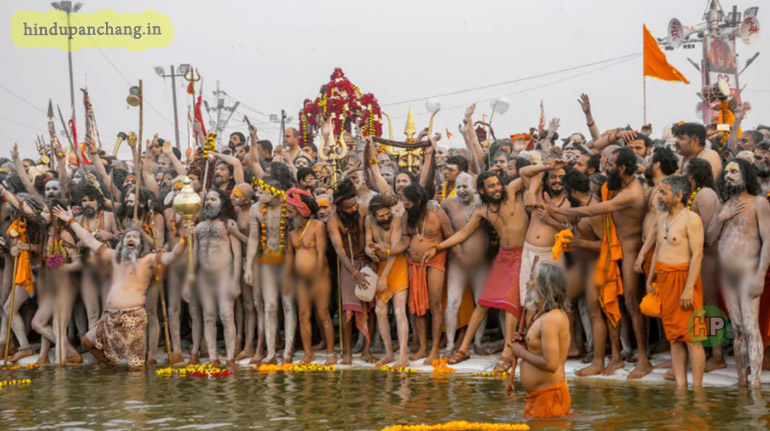
Stay Happy and Healthy
आप सभी को हिंदू पंचांग की ओर से महाकुंभ मेला 2025 की बहुत-बहुत शुभकामनाएं।🙏
Hindu Panchang wishes all of you a very happy Maha Kumbh Mela 2025..🙏

